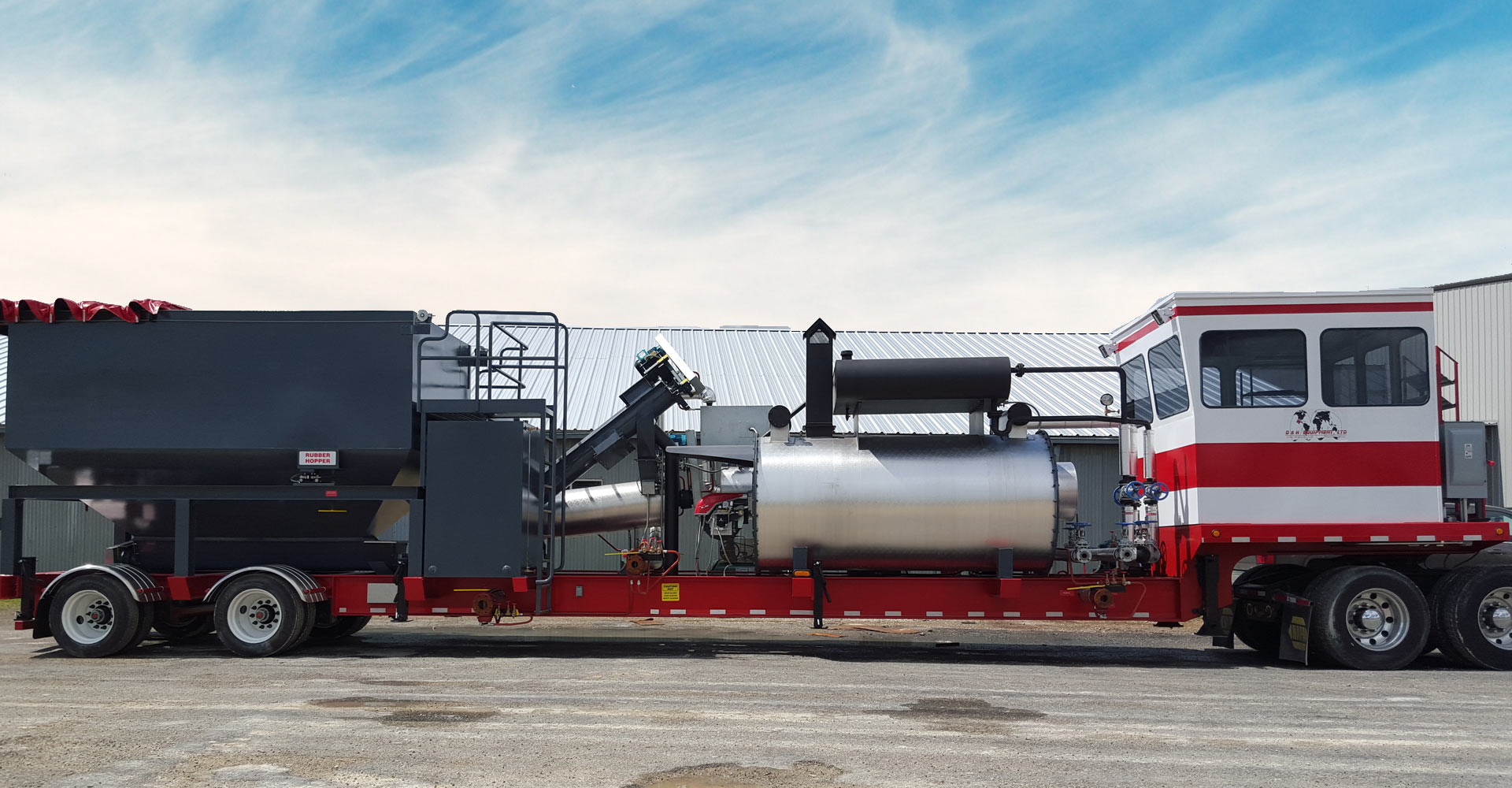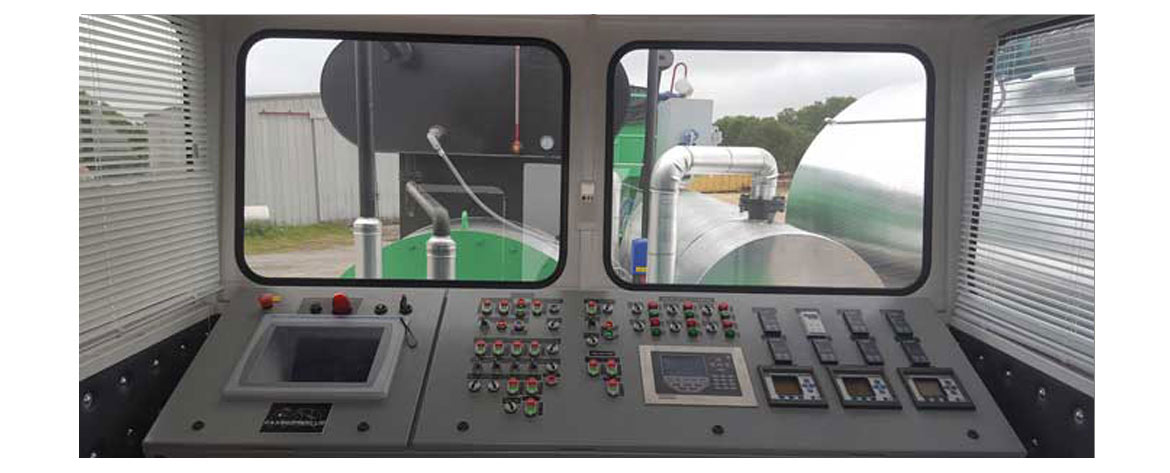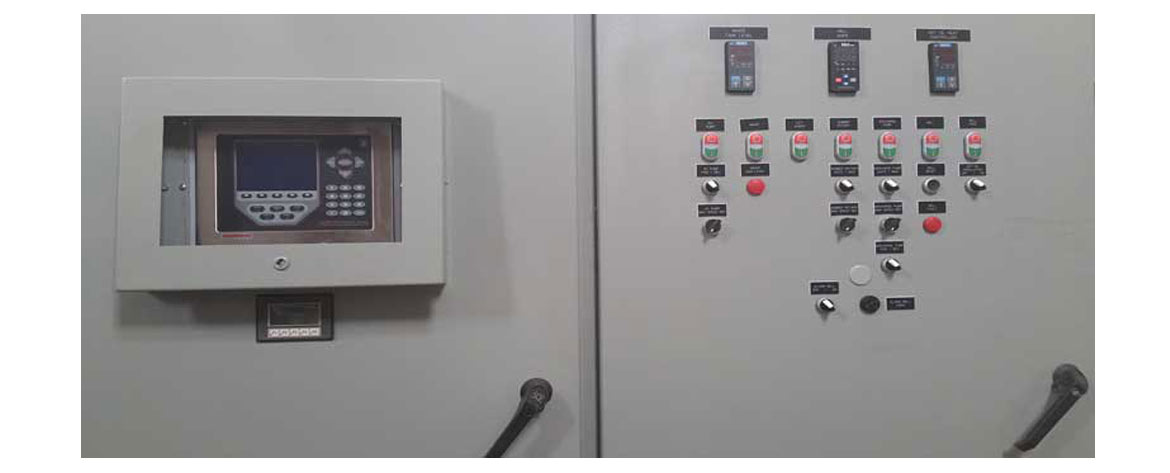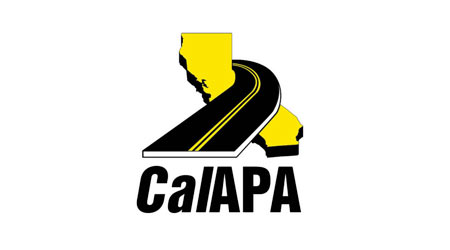Blending Options/Controls

We Have Everything You're Going to Need
Options - Controls - Mountings - Metered Materials
Our goal is to provide the best solution to our customer’s process and value. To achieve this, we are able to customize each blending plant to the customer’s production rates, material inputs, heating needs, automation levels, and budgets. Our experience has given us a wide range of options and alternatives available to our customers.
Productions Rates
Our inline blending plants are available in a wide variety of production ranges based on the customer’s expected daily production rate. The range generally varies between 10 to 60TPH of continuous inline production. Generally, the faster the production rate, the better the plant value. For blending plants that expect to produce 10TPH or less, I would recommend talking to D&H about a batch mixing system. The most common production rates are listed below:
Polymer (SBS) Blending Production Rates
Our inline blending plants are available in a wide variety of production ranges based on the customer’s expected daily production rate. The range generally varies between 10 to 60TPH of continuous inline production. Generally, the faster the production rate, the better the plant value. For blending plants that expect to produce 10TPH or less, we would recommend asking batch mixing systems. The most common production rates are listed below:
Asphalt Rubber Blending Systems
For polymer blending, D&H generally sizes the plant’s production rate to maximize the capacity of the high-shear mill. As such, these plants are often sized to approximately 12TPH, 30TPH, and 60TPH production capacities.
It is also very important to understand that these production rates are based on the production of polymer concentrate at around 12-14% (although we have also designed systems for much higher SBS concentrates). With downstream tankage, our customers are able to multiply the actual finished product production rates often 3-4 times the concentrate production rate.
Material Inputs
We are able to blend together numerous ingredients of a wide variety. Utilizing multiple hoppers or liquid dosing systems, these ingredients can be mixed simultaneously or separately in succession. Below are just some examples of the many materials our systems are capable of processing:
- Asphalts (multiple grades can be blended inline)
- Liquid additives, warm mix additives, antistrips, and extender oils
- Polymers (SBS, EVA, and others)
- Rubbers including ground tire rubber (GTR), crumb rubber (CRM), and high natural rubbers
- Crosslinkers including sulfur (powders, molten, and paste forms) and polyphosphoric acid (PPA)
- Filler powders (Calcium carbonate, Lime, Bentonite, etc.)
For example, our California blending systems designed for the Caltrans MPQP asphalt rubber specification generally inline blend asphalt, extender oil, crumb rubber, and high natural rubber simultaneously.
Controls / Automations
D&H’s offers three levels of control and automation as determined by the customers need and budget: Fully-Automated, Semi-Automated and Manual Control. Blending plant controls may also be tied into customer’s existing control systems and programs. Below is a general overview of the control options.
Fully-Automated Controls
The fully-automated option provides complete automation of material inputs, heating, and reporting for the most user-friendly experience. These controls can either housed within a slope-top panel inside a climate-controlled operator cab or within an outdoor panel enclosure. Full automation can accomplish:
- D&H’s PLC Blending System proprietary blending software
- Touchscreen operation
- Tank and valve monitoring and control
- Ability to reload hoppers on-the-fly while blending at the same time
- Data logging and reporting which can be extracted to a USB drive in .csv format
- Complete manual backup of all controls (that does not rely on the touchscreen)
- Remote monitoring and troubleshooting capabilities

Semi-Automated Controls
Semi-automated controls are a more economical solution that work first setting the blend recipe according to the desired ingredient percentages. The operator then manually controls the asphalt flow rate using a VFD or potentiometer. The software tracks the flow rate of the incoming asphalt to then automatically dispense the additive ingredients. This option also offers totalization reporting capabilities.

Manual Controls
Manual controls offer the most economical solution to customer’s budgets. All blending controls and readouts required to operate the plant are included within the control enclosure. The plant operator manually controls the speed and temperature of all material inputs.
Mountings
Our equipment has several mounting options available based on the intended use: Portable Trailer, Stationary Skid Mount and Containorized
Portable Trailer Mounting
Portable trailer-mounted equipment offers the most portability for contractors and companies who frequently relocate their blending operations.

Stationary Skid Mounting
Stationary skid-mounted systems are the most economical mounting options and provide the easiest access to plant equipment for maintenance and repairs.

Containerized Mounting
For blending equipment to be economically transported overseas, the ideal solution is often is a containerized plant. D&H Equipment has constructed plants capable of sliding into shipping containers as well as built containerized frameworks around our blending plants.

Dry Material Metering
Dry materials can be metered through our system a number of ways including weighbridges, loss weight hoppers (gravimetric), or volumetrically.
Weighbridges function as both feeder and meter and offer mass/weight accuracy within 0.5%. They allow continuous running capability with no regard to when hoppers are filled. Weighbridges are D&H’s ideal standard for many stationary plants.
Loss in weight hoppers rest on load cells with either a variable-speed screw auger or rotary valve. Product flowrate is controlled and adjusted in real time by the variable-speed auger/valve based on feedback from the load cells. Loss-weight metering is D&H’s standard for portable equipment.
Volumetric metering by use of a variable speed screw auger or rotary valve is the simplest and most cost-effective. Product material flowrate is calibrated/confirmed by use of variable speed drives with feedback from calibration testing and verification.

Liquid Material Metering
Dry materials can be metered through our system a number of ways including weighbridges, loss weight hoppers (gravimetric), or volumetrically.
Weighbridges function as both feeder and meter and offer mass/weight accuracy within 0.5%. They allow continuous running capability with no regard to when hoppers are filled. Weighbridges are D&H’s ideal standard for many stationary plants.
Loss in weight hoppers rest on load cells with either a variable-speed screw auger or rotary valve. Product flow-rate is controlled and adjusted in real time by the variable-speed auger/valve based on feedback from the load cells. Loss-weight metering is D&H’s standard for portable equipment.
Volumetric metering by use of a variable speed screw auger or rotary valve is the simplest and most cost-effective. Product material flow-rate is calibrated/confirmed by use of variable speed drives with feedback from calibration testing and verification.









